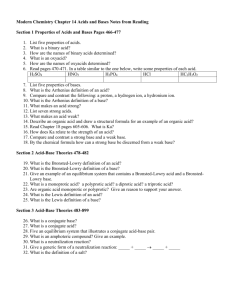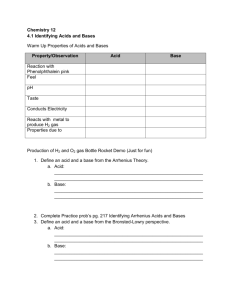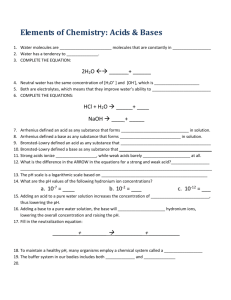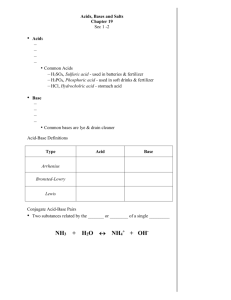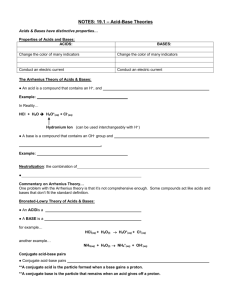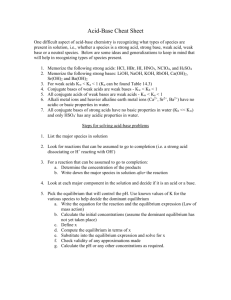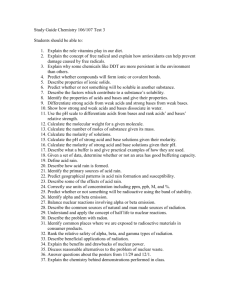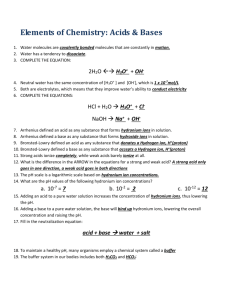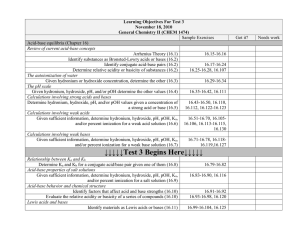Unit 5: Acids and Bases
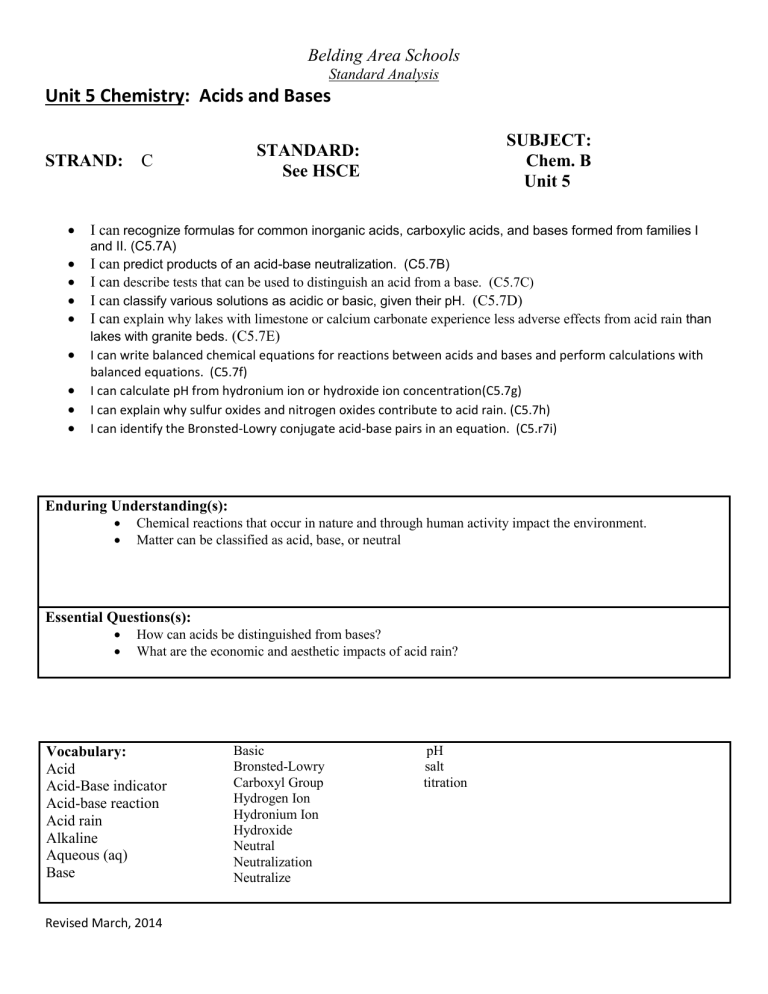
Belding Area Schools
Standard Analysis
Unit 5 Chemistry: Acids and Bases
STRAND:
C
STANDARD:
See HSCE
SUBJECT:
Chem. B
Unit 5
I can recognize formulas for common inorganic acids, carboxylic acids, and bases formed from families I and II. (C5.7A)
I can predict products of an acid-base neutralization. (C5.7B)
I can describe tests that can be used to distinguish an acid from a base. (C5.7C)
I can classify various solutions as acidic or basic, given their pH.
(C5.7D)
I can explain why lakes with limestone or calcium carbonate experience less adverse effects from acid rain than lakes with granite beds.
(C5.7E)
I can write balanced chemical equations for reactions between acids and bases and perform calculations with balanced equations. (C5.7f)
I can calculate pH from hydronium ion or hydroxide ion concentration(C5.7g)
I can explain why sulfur oxides and nitrogen oxides contribute to acid rain. (C5.7h)
I can identify the Bronsted-Lowry conjugate acid-base pairs in an equation. (C5.r7i)
Enduring Understanding(s):
Chemical reactions that occur in nature and through human activity impact the environment.
Matter can be classified as acid, base, or neutral
Essential Questions(s):
How can acids be distinguished from bases?
What are the economic and aesthetic impacts of acid rain?
Vocabulary:
Acid
Acid-Base indicator
Acid-base reaction
Acid rain
Alkaline
Aqueous (aq)
Base
Basic pH
Bronsted-Lowry salt
Carboxyl Group titration
Hydrogen Ion
Hydronium Ion
Hydroxide
Neutral
Neutralization
Neutralize
Revised March, 2014
Belding Area Schools
Standard Analysis
HSCE (High School Content Expectations)
See above
Information/Rules/Procedures/Resources/Assessments
Instructional Strategies for all students:
See instructors Moodle page for daily lesson plans, activities, labs, power points, homework, and tutorials.
Differentiated Instruction for at-risk students:
After school study sessions.
Review Guides
Tutorials on Moodle
Retesting opportunity on all assessments
Co-taught classes available
Assessments:
On staff share drive.
Revised March, 2014
